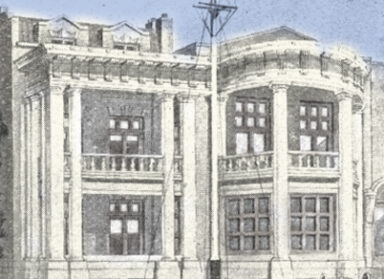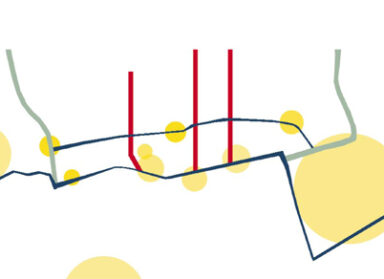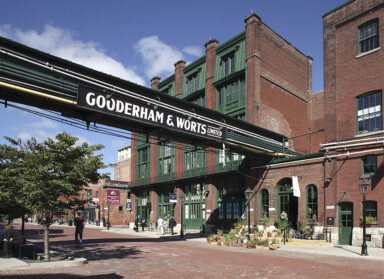Prior to joining the office, ERA’s Alex Rowse-Thompson spent several years as a Conservation and Design Officer in Gosport, an ancient naval town in the UK. As part of this work, Alex advocated for the heritage designation of an unusual piece of 20th century military infrastructure in Gosport: No. 2 Cavitation Tunnel. Recently, this advocacy proved successful, and the Tunnel was designated by English Heritage.
“Cavitation” is the formation and collapse of bubbles, a process which marine designers attempted to minimize in order to reduce propeller erosion and underwater noise (particularly important for submarines in wartime). A cavitation tunnel is similar in function to a wind tunnel, but filled with water for hydrodynamic testing. No. 2 Cavitation Tunnel was built in the early 1940s by Blohm and Voss of Hamburg, Germany, the firm that built the battleship Bismark, among others, for the HVSA, a highly significant Hamburg research establishment.
No. 2 Cavitation Tunnel is one of only two such facilities in the UK. It was brought to England after the Second World War as part of the war reparations program. Buildings 47 and 46 were constructed to house the Tunnel and associated water tanks. The buildings are of steel-frame construction and encased in English bond red brick with flat roofs. The Cavitation Tunnel occupies a clear space (except for floors around), which extends to three of the four storeys on Building 47. Window and door surrounds are concrete, and Building 46 retains its original steel-framed windows.
The Tunnel is located at the former Admiralty Experimental Works where ship model research has been carried out for around 125 years. While operational, the Tunnel was a part of this research process, which has been directly responsible for the design of every British Armed Forces vessel. The Tunnel has now been designated for the value it contributes to our understanding of wartime and post-war military history and design.
Here in Canada, we are also beginning to take a closer look at our 20th century heritage and its important contribution to our understanding of the past, present, and future. For example, the Diefenbunker, an underground bunker constructed to protect various members of government in the event of a nuclear attack, was designated a National Historic Site in 1994. Other important WW2 sites and structures, however, such as CFB Picton, a WW2 airplane base in Prince Edward County, merit further research and protection. The often temporary and emotionally imbued nature of WW2 structures increases their vulnerability to both oversight and demolition. A Canada-wide survey would be instrumental in capturing this important period of history.
![The Tunnel in Hamburg (1941)[1]](http://www.era.on.ca/blogs/office/wp-content/uploads/2013/12/The-Tunnel-in-Hamburg-19411-500x331.jpg)






